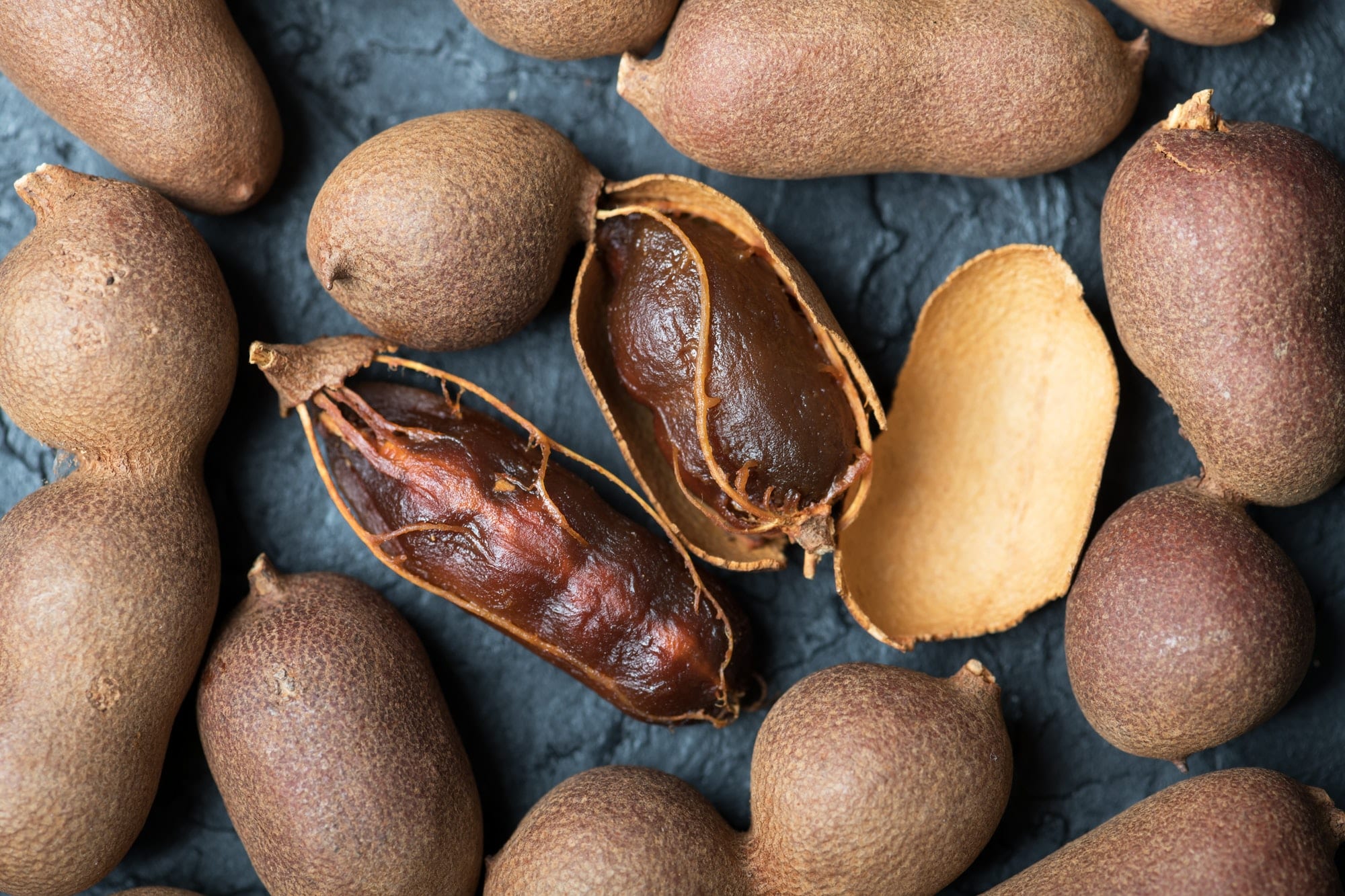
Tamarind is a long, pea pod shaped fruit that contains a sour pulp and seeds and is a mid-brown colour. It has a strong, tart flavour and a little goes a long way.
It is sold as a paste, in a pressed block (cake) or as whole pods and tastes similar to a date but is not as sweet. It is sometimes called an Indian date.
Tamarind is a key ingredient of Worcestershire sauce and HP sauce. But it is also used for medicinal purposes and as a metal polish.
The young and tender leaves of the Tamarind tree are also used in Indian cooking.
Background
The tamarind tree is thought to originate in tropical Africa but has been grown for so long on the Indian subcontinent that it is sometimes said to be native.
It has been cultivated as a food source for thousands of years in India, but in the sixteenth century it was introduced to Europe and the Americas by Spanish and Portuguese colonists.
India is the largest producer of tamarind although it is widely used throughout the world.
The pod is known as an indehiscent legume, meaning that it does not open naturally when ripe but instead stays closed. Inside the pods there are some large seeds and a sticky sour pulp. This pulp becomes even more tart after the pods have been dried.
The pods can be eaten fresh but for culinary purposes are more commonly used dried.
Uses for Tamarind
Tamarind can be eaten unadulterated, but it is often mixed with sugar or diluted to mellow its strong flavour.
The pulp can be used as a base for savoury dishes and condiments such as chutneys, and it works well in small amounts in soups and stews to liven these up with a hint of sharpness.
It makes a good marinade for meat and its acid content breaks down and helps to tenderise tougher cuts. Less tender cuts of beef such as braising steak or beef skirt can be marinade in tamarind liquid (oil or water containing only small amounts of tamarind).
Tamarind paste, which can be pre-bought is probably the simplest and most versatile way to store and use this ingredient. Use 15 millilitres of paste (concentrate) with four to six tablespoons of warm water to reduce the pungency.
In Indian cuisine it is frequently used to flavour curries and dhals.
Medicinal uses for Tamarind
Tamarind has been used in traditional medicine as a laxative, partly due to its high fibre content. The leaves of the tree are steeped to create an infusion for drinking for this purpose.
Both the fruit (pods) and leaves are used as anti-inflammatories and it is said to be particularly good for relief from chronic (long standing) inflammation.
One of the oldest uses of Tamarind medicinally is as an antiseptic and it has been used in the treatment of malaria in tropical areas.
Tamarind is known for controlling cholesterol levels which in turn impacts positively on the health of the heart.
Liver disease caused by lifestyle choices can be managed by including tamarind in your diet, as it helps to detoxify the liver.
A good home made remedy for acne or skin break outs is to mix a tablespoon of tamarind paste with a tablespoon of natural yoghurt and half a teaspoon of turmeric powder, Apply the paste to the affected area for ten or fifteen minutes before wiping off.

